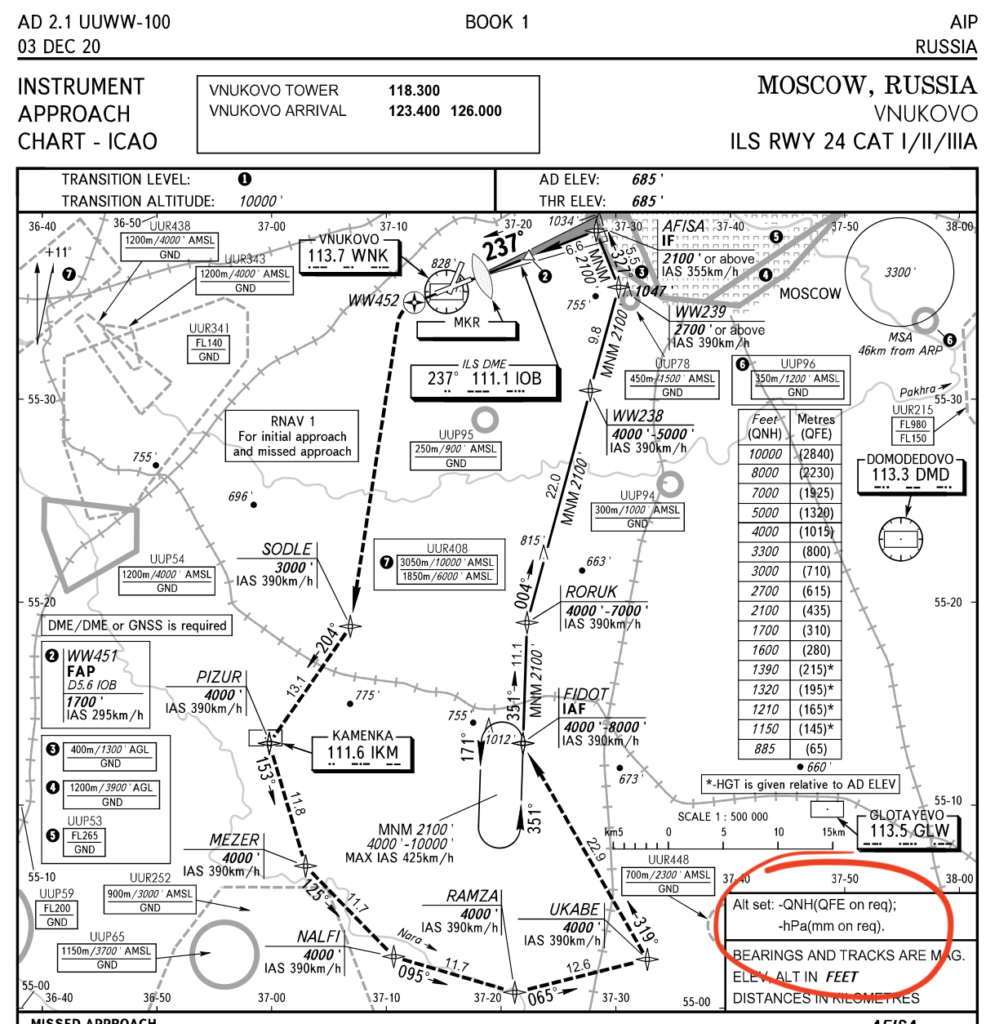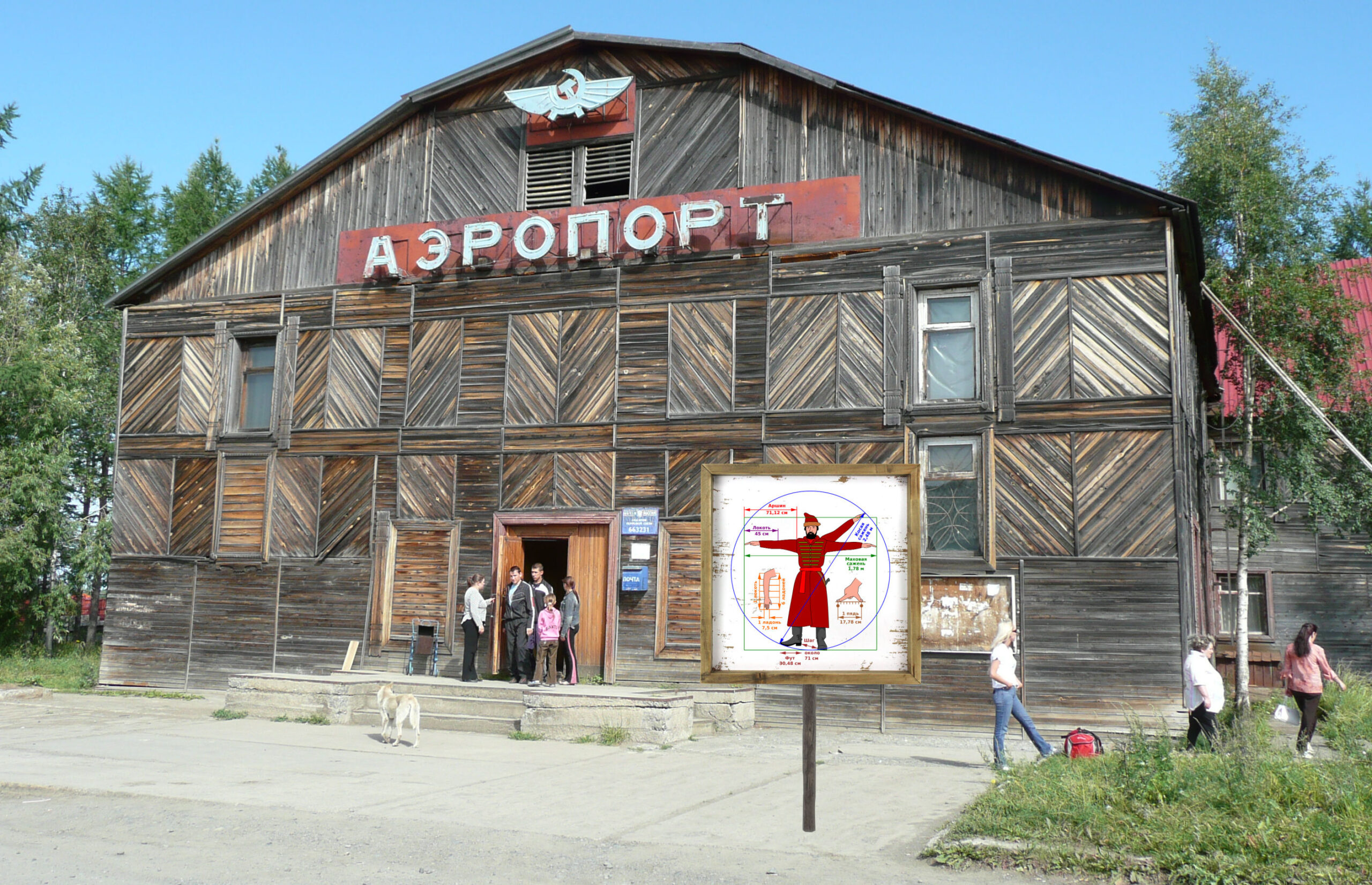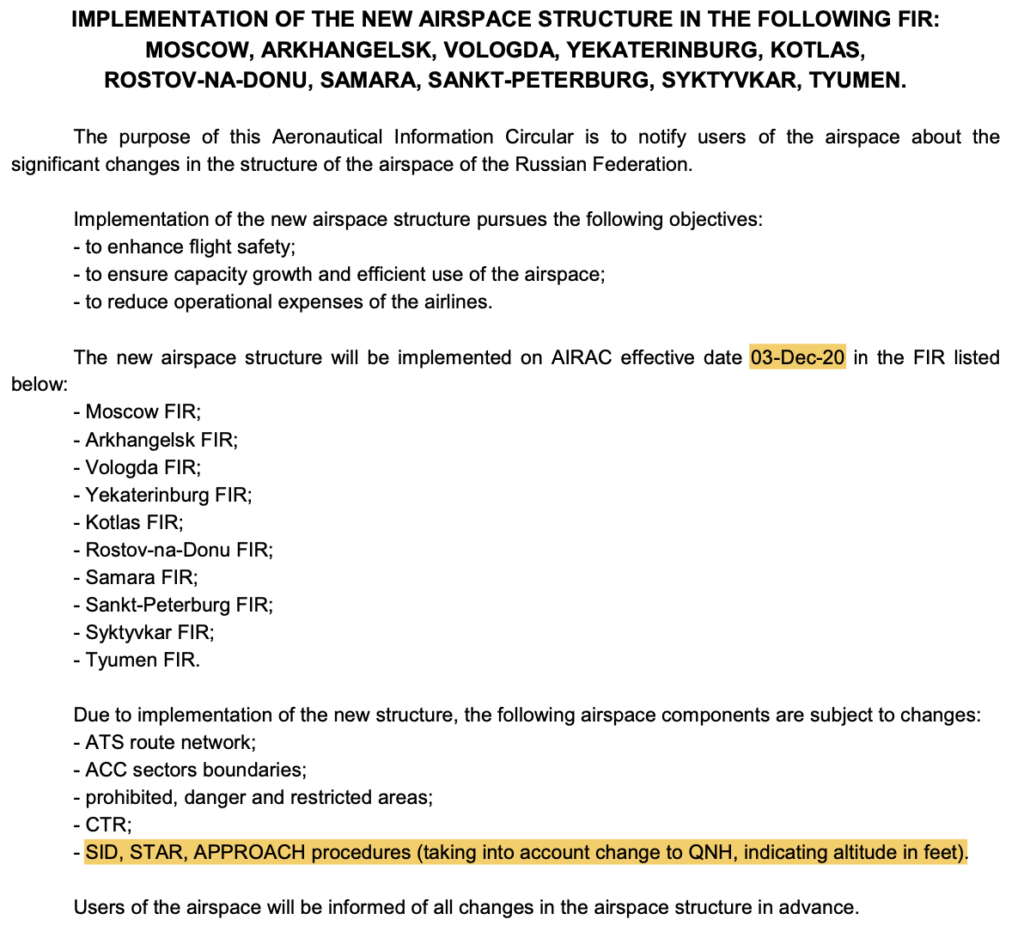Russia have never been in much of a rush to join (most) of the rest of the world in how they measure stuff, but they are slowly getting there…
No longer playing me-trics on us?
Way back in 2011, they decided they would start using Feet instead of Meters above the transition level. So traffic cruising on through did not have to worry about sudden changes to metric levels, but any descending down into Russian airports still needed to whip out the old conversion tables once they went below transition.
Then in 2017, they started a trial at ULLI/St Petersburg to see if the whole Foot thing might work for them.
It turns out it went ok, because as of 3rd December 2020 they will be implementing this across Russian airspace – check out AIC 08/19 for the official announcement.
It’s not all smooth sailing yet though…
The AIC seems to suggest that changes will occur in all airspace from Dec 3, but this requires lots of chart updates – in reality it’s more likely that the big international airports will get updated first, and then the rest will follow.
At the end of November, European Regulators issued a caution to operators because some of the chart and database folk are struggling to update everything in time. We are talking en-route charts, SID and STAR charts, updates to prohibited and danger areas, updates to sector boundaries…
In their Safety Information Bulletin, EASA say if you are heading to Russia, check your charts to ensure they are in date, and keep an eye out to see what the changes are and if they have been implemented where you are heading.
What has changed?
- En-route stays the same: Flight Levels in feet, and metres if you are in a Russian aircraft.
- Below transition you will now also receive clearances in Feet (QNH).
- Pressure will be reported in hPa, unless you are a Russian aircraft then you can request in mmHg.
Last time we checked 188 out of 193 ICAO member states are using feet and QNH, instead of meters and QFE. The only countries still working in Meters are China, Mongolia, North Korea, and Russia and Tajikistan (in lower airspace).
Here is a picture of UUWW airport showing the change:

The bit to look out for
Transition Levels
Initially, we had information that the transition altitude was going to be fixed at 10,000 feet across Russian airspace. Not so, it turns out. Each airport will have their own transition altitude and associated transition levels, so be sure to check the approach plates.
It looks as if Moscow is standardising it across their airspace with a transition altitude of 10,000′, and transition levels based on the pressure
- FL110 when QNH is 1012hPa or above
- FL120 when QNH is 977hPa or above
- FL130 when the QNH is less than 977hPA
And there is more
- All ATS routes have changed to RNAV5.
- A lot of TMA structures, and airspace areas around airports have changed which means a lot of arrivals and departures for airfields in the Moscow TMA airfields will also have changed.
- UUDD/Moscow Domodedovo and UUEE/Moscow Sheremetyevo airports now have independent simultaneous arrivals on their parallel runways.
References:
- You can access the Russian AIP here
- You can read up on Metric Altitude Reference info here
- Read our article from 2017 when ULLI/St Petersburg made the switch to feet and QNH
Thanks to Igor Nikolin, Deputy Head of the Air Navigation Support Service UTair Airlines for assistance with this post.
More on the topic:
- More: Beware Below: New ICAO Guidance on QNH Errors
- More: Ukraine-Russia Spillover Risks: Nov 2022
- More: Is the Fuel Pool Drying Up?
- More: Russian CAA website taken offline
- More: Ukraine/Russia Update: Airspace closures, Flight bans, Sanctions, Routing considerations
More reading:
- Latest: Teterboro: RIP the RUUDY SIX
- Latest: 400% increase in GPS Spoofing; Workgroup established
- Latest: GPS Spoofing WorkGroup 2024
- Safe Airspace: Risk Database
- Weekly Ops Bulletin: Subscribe
- Membership plans: Why join OPSGROUP?












 Get the famous weekly
Get the famous weekly 






We operated into UUDL very recently and feedback from our crew tells us that they have not adopted the recent CHANGES TO FEET, and still using metric, and predominately QFE system. Are you aware of any other areas within Russia still using the old metric system.